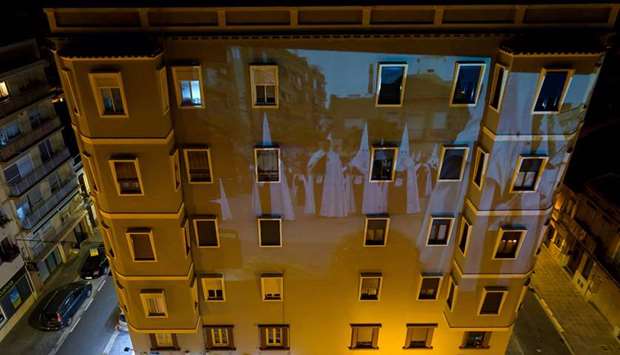The coronavirus death toll curve in Spain flattened further yesterday as the government prepared to start easing one of the world’s strictest lockdowns and virtual Easter celebrations were held instead of traditional processions.
The coronavirus causes the Covid-19 respiratory disease.
Spaniards have been off the streets since mid-March and have suffered nearly 16,000 fatalities from Covid-19 – the third worst toll after Italy and the United States.
But the slowdown in the rate of infection and death has enabled officials to consider a gradual lifting of the lockdown.
“The government is preparing new scenarios of de-escalation,” Health Minister Salvador Illa told reporters.
Even though several officials have said the formal lockdown will probably continue into May, some restrictions are to be lifted on Monday to breathe life into a paralysed economy.
From then, workers in some sectors such as construction will be allowed out again and some factories will reopen.
Further easing of the lockdown will depend on analysis of the epidemic’s evolution, Illa said. “These are very complex decisions that require multi-disciplinary analysis.”
Though many people will return to work, social distancing should be maintained, Maria Jose Sierra, the deputy head of health emergencies, said at a virtual news conference.
“We will give a series of recommendations. The most important is if there is a person who shows the slightest symptom, they should contact the health system and remain in self-isolation,” she said.
Protective masks are recommended and authorities plan to distribute them at public transport hubs.
Instead of taking to the street for ceremonies on one of the most important days of the Christian calendar, many Spaniards held virtual processions on social networks, hooking up to play folk music and wear traditional costumes.
In the Castilian town of Cuenca, drummers went onto balconies and doorsteps to play songs they would usually perform around the town.
Reuters footage showed a closed church in Seville, normally the site of lavish Holy Week processions, with flowers and candles piled by the closed gate but no one around, and a mask pinned to the gate with the inscription “give us hope”.
The number of daily deaths fell to 605 yesterday, the lowest figure since March 24, the health ministry said.
The rate of increase has dropped to 4%, down from 20% two weeks ago.
Spain’s total death toll stood at 15,843 yesterday.
“We are seeing the curves are on the decline, even though there are still many cases,” Sierra said.
Italy meanwhile reported a fall in the daily death toll from its novel coronavirus epidemic, while the government was due to announce an extension of lockdown measures through to early May.
In its bulletin, the Civil Protection Agency announced 570 fatalities, down from 610 on Thursday, bringing the country’s overall death toll to a staggering 18,849.
No other country in the world has faced a higher number of dead from Covid-19, the respiratory disease caused by the novel coronavirus.
However, Italy has recently seen a flattening of the contagion curve.
The total number of infections increased by 3,951, or 2.75%, to 147,577.
The daily increase has been under 4% since Sunday, compared to more than 20% in early March.
The number of people who have recovered from the disease jumped by 1,985, to 30,455, and the number of patients in intensive care fall for the seventh day in a row, by 108 to 3,497.
Earlier, newspapers La Repubblica and Corriere della Sera said that Prime Minister Giuseppe Conte would prolong lockdown rules, due to expire on Monday, until May 3.
Conte was scheduled to hold a press conference later.
There will be some small relaxations starting on Tuesday, the newspapers reported, with bookshops and stationers expected to be allowed to reopen.
Forestry work and the manufacturing of agricultural machinery may also be allowed to resume, La Repubblica reported.
The government faces a difficult balancing act between business groups clamouring for a partial reopening to soften the economic cost of the epidemic, and public health experts urging caution.
The slowdown in the contagion curve “is a positive signal, but we always said that this positive signal should not make us lower our guard”, National Health Institute president Silvio Brusaferro said.
But with most shops and factories closed since early March, Italy is heading into what is likely to be the most severe recession of its post-war era.
Italian bank UniCredit has predicted a 15% fall in GDP this year, while national statistics agency Istat has forecast 385,000-900,000 job losses depending on the length of the lockdown.

Easter processions images are projected on the facade of a building in Valencia after religious processions were cancelled during a national lockdown to prevent the spread of the coronavirus. In the week leading up to Easter Sunday, hundreds of colourful processions featuring penitents in cone-shaped hoods and centuries-old religious floats traditionally flood the streets of villages and cities across Spain.


